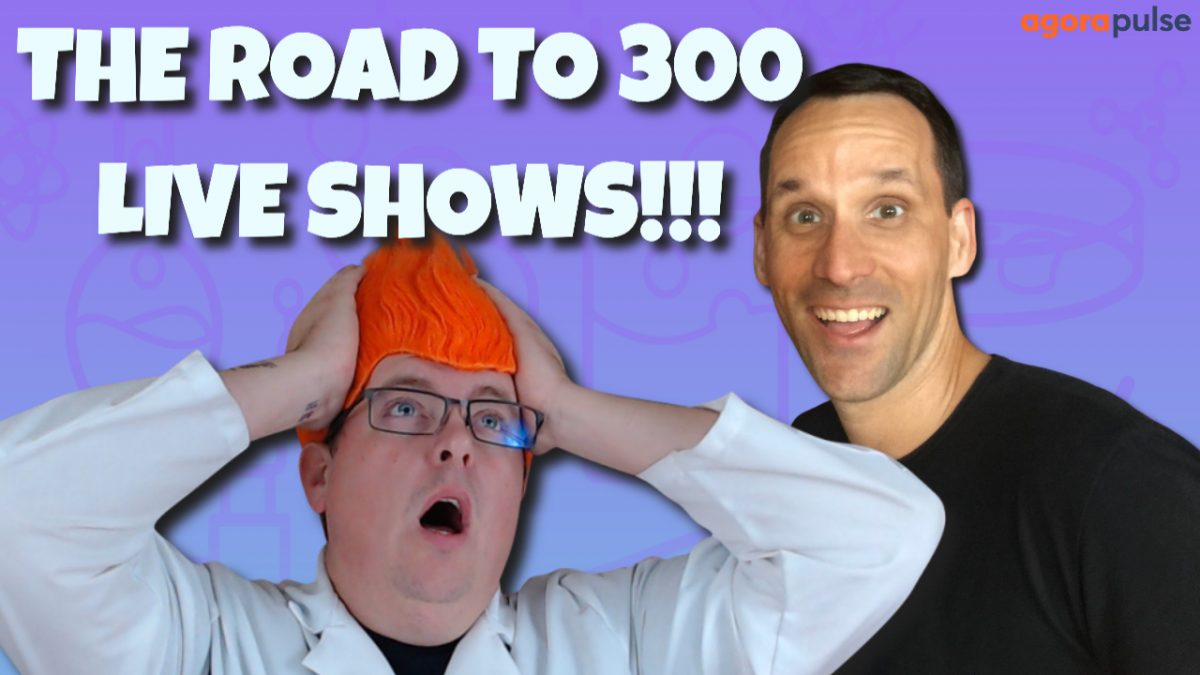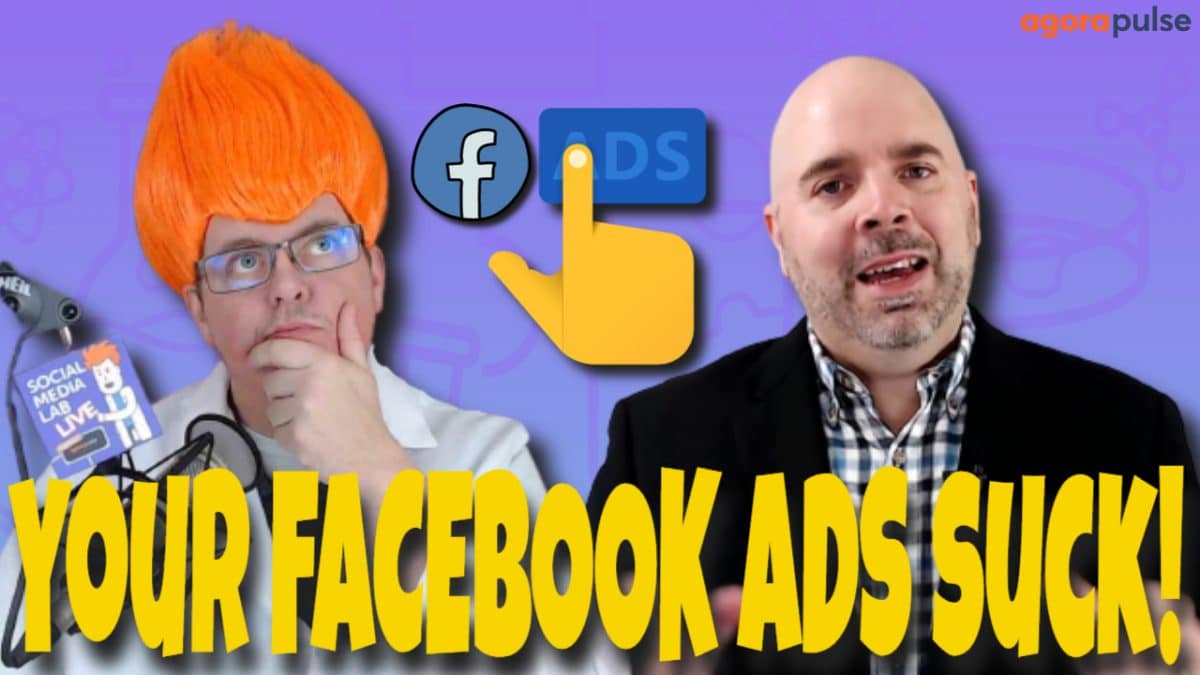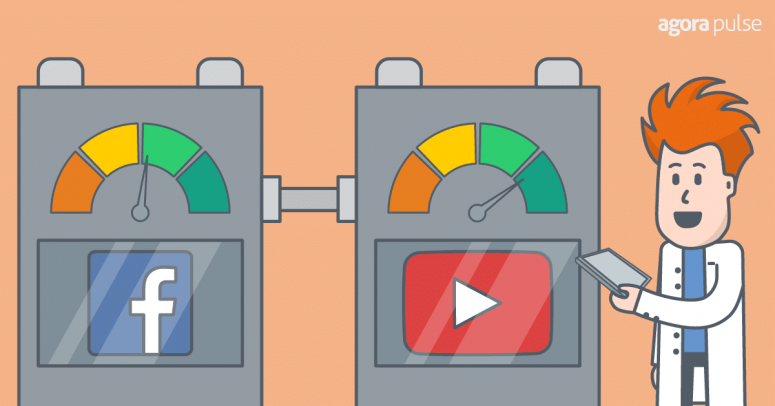

Subscribe to the Social Media Lab Podcast via iTunes | Stitcher | Spotify | Google Play | RSS
Facebook Video Ads vs YouTube Ads: A Battle of 2 Juggernauts
Have you ever wondered how Facebook video ads stack up against YouTube ads?
Well, you’re in luck! We recently ran an experiment to answer that question.
In this experiment, we’ll take a look at the number of free trials that were generated from our ad traffic.
Background
Midway through 2017, we started to hear from Facebook marketers that video ad costs were on the rise.
We found out recently while running an experiment on Instagram Stories the average price per ad on Facebook went up by a staggering 43% in Q4 2017!
On the other hand, YouTube was experiencing a decline in popularity.
Brands were pulling out of the platform in March after YouTube ran their ads beside extremist content, which got a lot of people riled up. It happened again in November, when Google accidentally ran some ads beside pedophilia content.
While big brands were shying away from the platform, our interests in YouTube grew.
On one hand, the costs were rising on Facebook and on another the most powerful video platform in the world was seeing less demand.
It was the perfect opportunity to pit Facebook video ads against that of YouTube’s and hence the experiment was born!
Our Hypothesis
Our hypothesis was simple, but based on my assumptions regarding past video ad performance.
Hypothesis: YouTube video ads will yield more free trials than Facebook video ads.
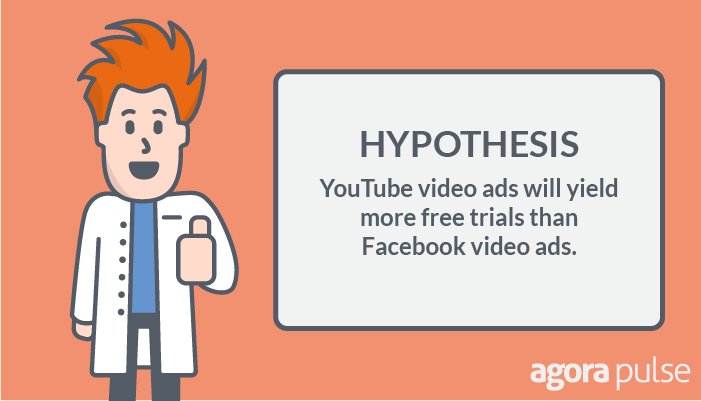
Let’s see if we were correct.
Setting Up The Experiment
Setting up the experiment on both Facebook and YouTube was quite straightforward.
Let’s start with Facebook.
Facebook Setup
First, we created a website conversion campaign on Facebook.
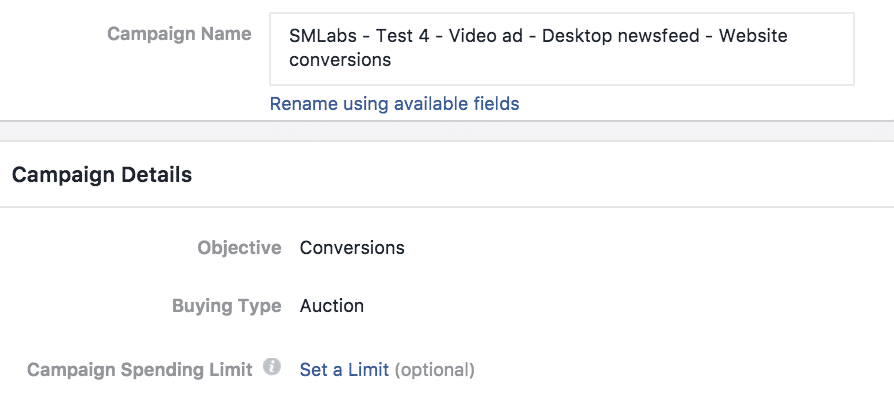
Next, we optimized for the “Complete Registration” event which is the event we used to track free trials.
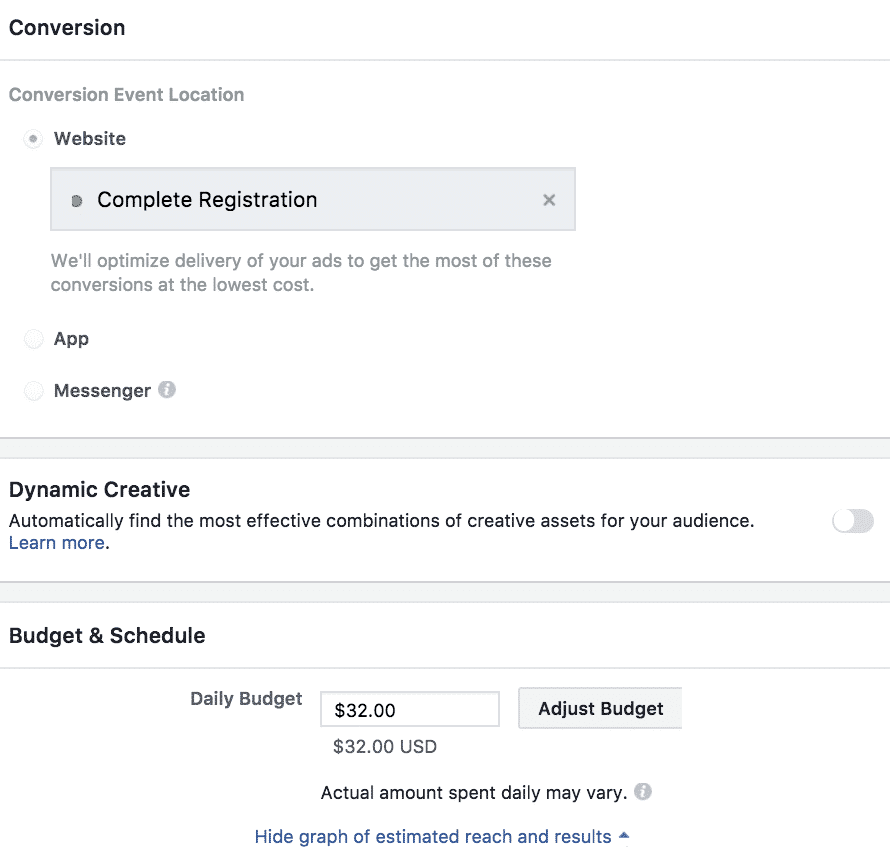
Then we set up the Budget at $32.00 a day.
Our budget goal was to spend at least $500 as quickly as possible to get some data.
Targeting
To make both campaigns comparable we used the same targeting on both Facebook and YouTube.
So we targeted people who visited our website at www.agorapulse.com for the past 30 days and excluded people who viewed our pricing pages and existing users.
Plus, our website caters to nearly everyone except those who speak Portuguese, Spanish, and French. We have separate websites in those languages serving them, so we excluded them from this campaign as well.
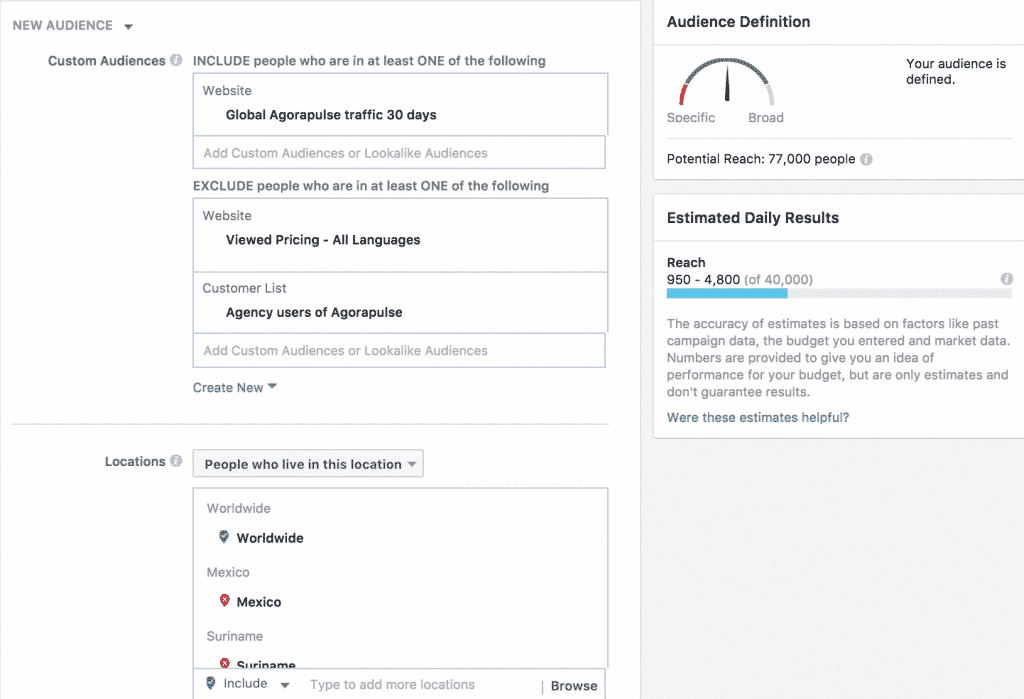
Placement
Similar to all of our paid experiments so far, we only used the Desktop News Feed and omitted mobile — since we didn’t have an easy way of tracking free trials from mobile users.
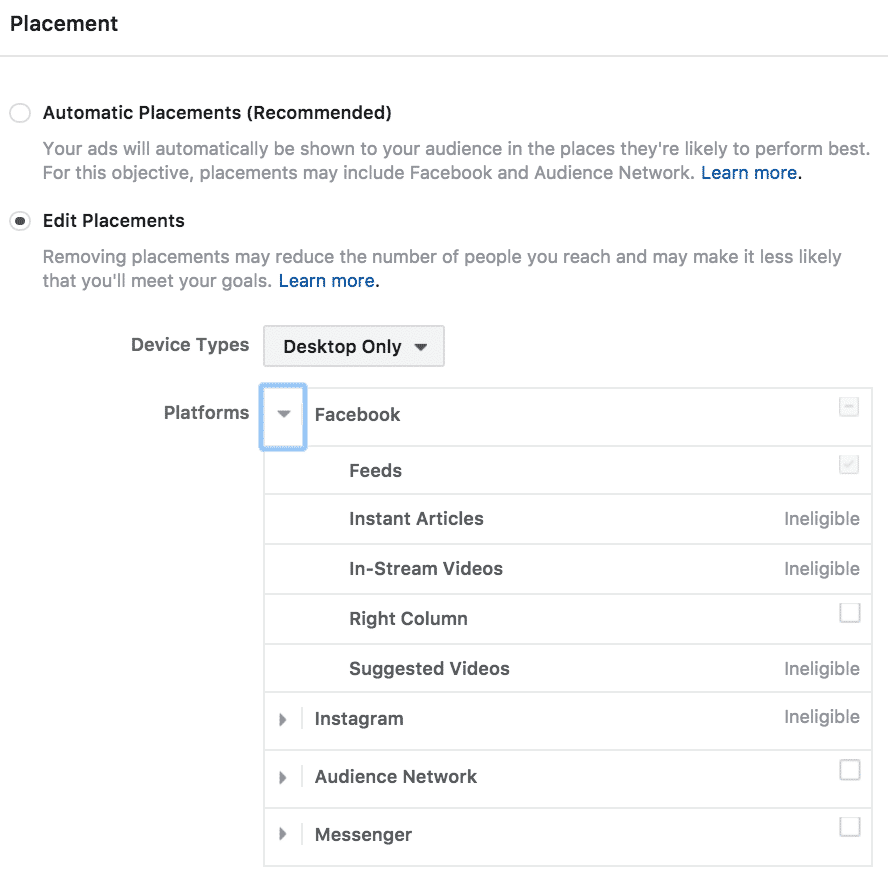
Now, let’s go over how we set up the YouTube side of things so you can see the similarities between the two campaigns.
YouTube Setup
The campaign objective we used was “Standard Video View”.
Unlike Facebook, YouTube does not have a separate conversion optimized campaign objective, so we had to make do with it.
Our daily budget was €26, which was the equivalent of USD$32 at the time of the experiment.
In the screenshot below, you’ll see that our budget was €50. Ignore this for now and I’ll explain why we did this later at the end of this post. 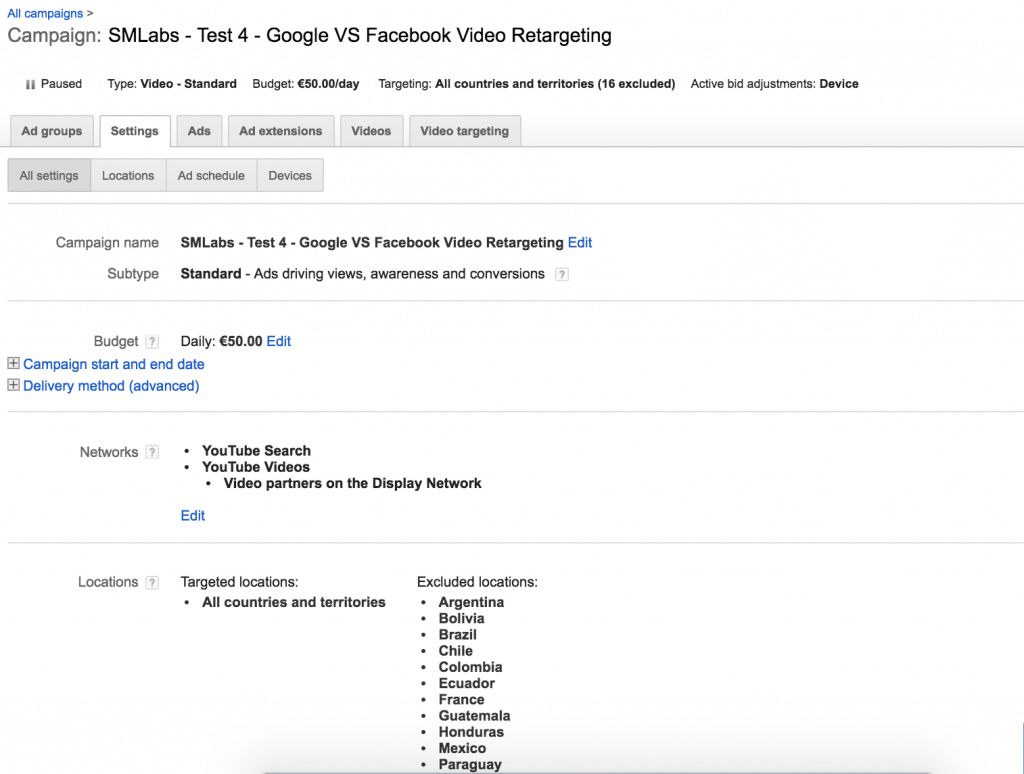
Targeting
Our targeting on YouTube was similar to Facebook.
We targeted all website visitors in the last 30 days and excluded people from French, Portuguese, and Spanish speaking countries as well as people who visited our pricing pages (because it shows that they had buying intent) and existing users.
And before we reveal the results, let’s take a look at both the ads on Facebook and Youtube!
Facebook:
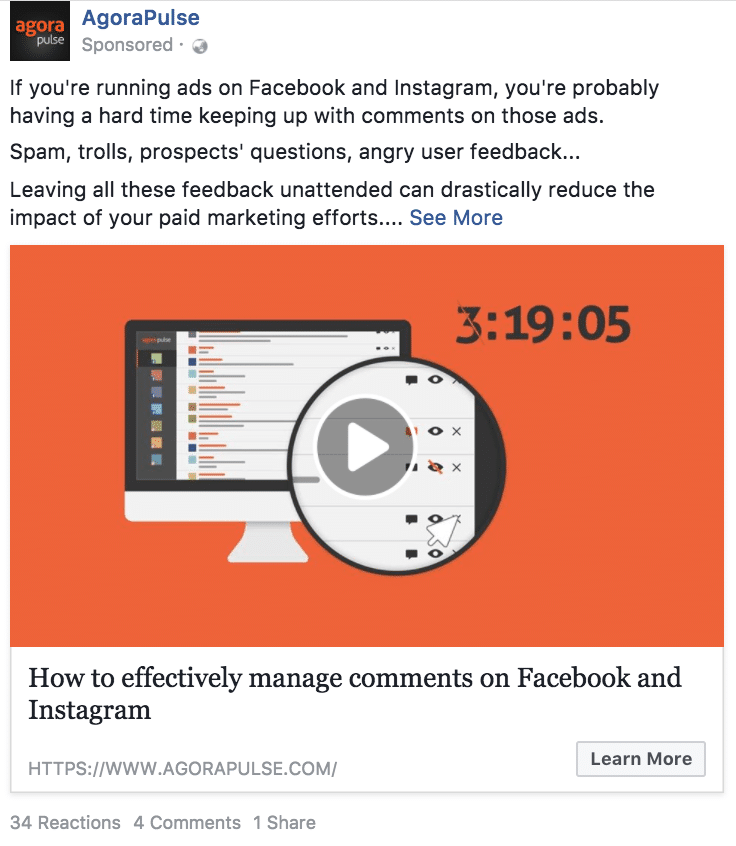
Unlike YouTube video ads, you could include text copy and headline in Facebook video ads. That’s an inherent advantage of Facebook video ads since it is a social platform.
YouTube:

Unlike the Facebook video ad, there was no copy accompanying the video except for the call to action on the bottom left of the screen.
Alright, since we’ve gone through all the details of the campaigns, it’s time for the big reveal!
Do YouTube Video Ads Outperform Facebook Video Ads in Terms of Free Trials?
Check out the screenshots below and then let’s dig in a little further…
Facebook video ad result

YouTube ad result

Here’s a quick summary:
- We spent a similar amount of money on both platforms: USD$742 on Facebook which is the equivalent of €602 spent on YouTube. (Our AdWords account was created years ago in Euros, so we weren’t able to use US Dollars instead.)
- The Facebook video ad achieved a link CTR of 0.21%, which was lower than YouTube’s 0.31% by 10 basis points. This means that more people clicked on our YouTube ad than the Facebook video ad on average.
That’s a good sign, but how does the quality of traffic compare between Facebook and YouTube?
YouTube video ads drove more traffic than Facebook video ads for a similar ad spend.
But did that translate into the bottomline?
Here are the results!

First, Facebook generated a total of 125 link clicks and 12 free trials, which gave us $61.84 per free trial.
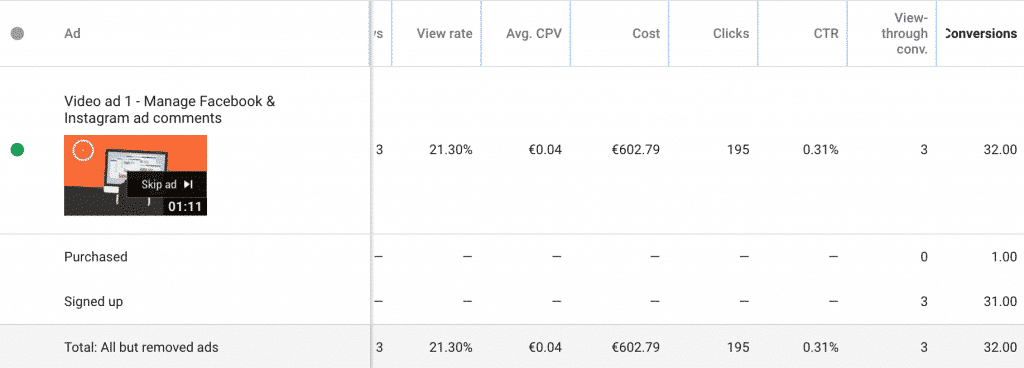
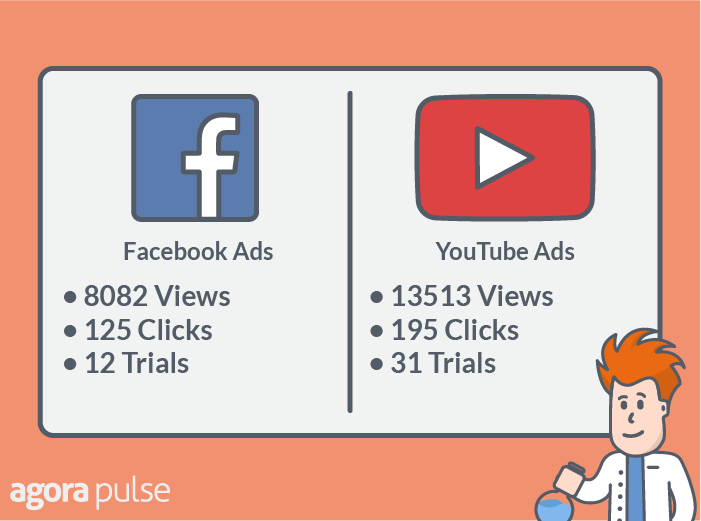
On the other hand, YouTube generated a total of 195 clicks, 31 free trials, and 1 subscription. Each free trial cost an estimated amount of €19, which is the equivalent of $24!
$61.84 vs $24 per free trial for a similar ad spend…
YouTube’s the winner!
But before we get too excited, let’s put these results into the statistic calculator and see if they’re statistically significant.
Since YouTube counted views we used Facebook’s 3 second view as a comparison: (A is Facebook, B is YouTube).
First we looked at the conversion rate of views to clicks.
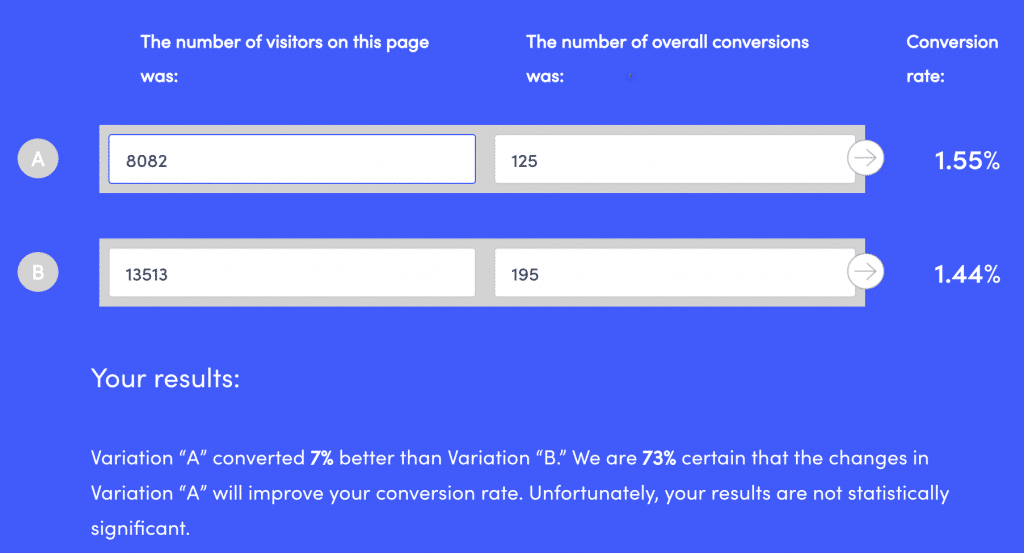
This data tells us that there is no significant difference in the number of clicks over views on both Facebook and YouTube.
What about the conversions to free trials? Let’s take a look.
As you can see, YouTube traffic converted 66% better than Facebook traffic!

According to our statistical formula YouTube videos win based on the free trial conversions. Weighing in with a 99.99% statistical significance value! (can’t get much higher than that!)
In other words, we have enough information to support our hypothesis that YouTube ads outperformed Facebook video ads in terms of free trials.
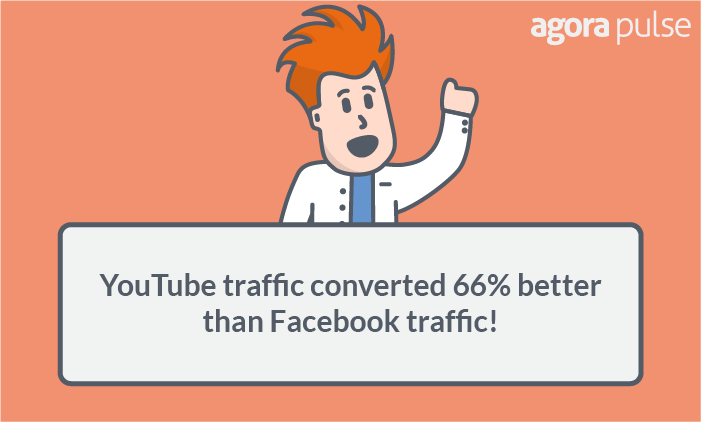
For once we’re correct!!!
Some Further Insights about this Experiment
Takeaway #1
Due to our results showing YouTube ads outperformed Facebook video ads, we decided to take a chance and increased our ad spend on YouTube.
We generated 71 more free trials at €29 per free trial. 2 of them upgraded into paid subscriptions within 30 days, which gave €1,044 per subscription.
Based on these numbers alone, we made a tiny profit off the campaign. However, we are confident that the actual profits were higher as we see a significant number of free trials turning into subscriptions past the 30-day mark.
The lesson here is to know your customer lifetime value (CLTV) and time to conversion.
CLTV measures the value that a customer gives your business over his lifetime. Knowing this figure will allow you to run acquisition campaigns more freely. Companies like Amazon make losses when they acquire customers upfront, but they recoup their acquisition months and years down the road.
On the other hand, time to conversion refers to the amount of time a prospect takes to become a paying customer on average. If a prospect converts into a paying customer in less than 30 days, you can rely on Facebook’s or Google’s native reports.
However, if your prospect takes more than 30 days to convert into customers, you will need to set up UTM parameters, pass those data into your CRM, and analyze the results by cohort every 30 days to know if your campaigns are making money. Or you could use a third party tool like WickedReports to do all the work for you.
This will inform your decision whether to keep, scale, or stop a campaign.
Takeaway #2
So YouTube generated more free trials for us, but just how good were those free trials?
One way to find out is to match the demographic and geographic information of the leads against that of your paying customers.
For Agorapulse, free trial users who are older are more likely to convert into paying subscribers than free trial users who are younger.
Here’s what we found when we looked into our YouTube reports:

Alas!
22 (71%) of the 31 free trials came from the younger age groups between 18 and 34.
On the other hand, the sole subscriber we saw from this experiment came from the age group between 45 and 54.
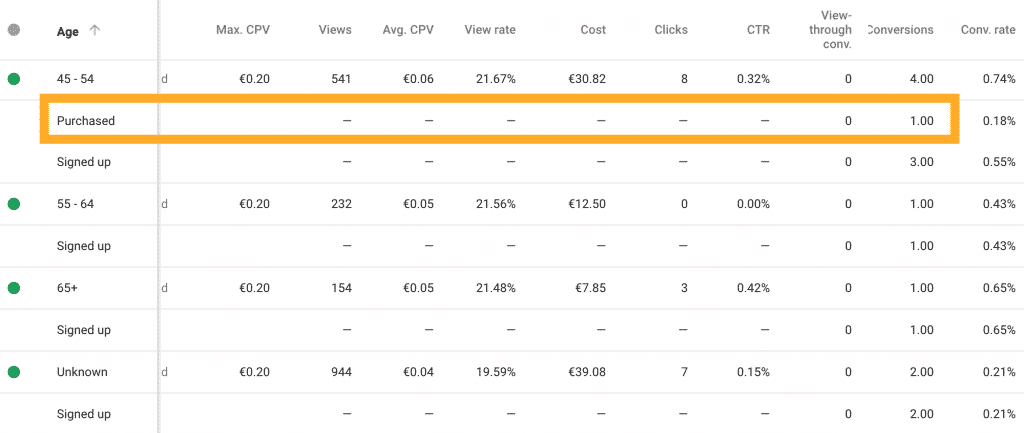
The lesson here is to balance quantity and quality. If we had more leads who are older, then perhaps our campaign is better than we thought. However, since the majority of the leads we got were younger, we are going to keep an eye on the conversion rates after 30 days to see if they convert.
Likewise, if your campaigns aren’t getting enough conversions, take a look to see if those conversions match your ideal buyers’ profile. If so, then those conversions could be worth more than you thought and your campaigns could just turn into a winner despite having fewer conversions!
Insight #3
Everyone is flocking to Facebook advertising for its success stories, but many forget the prowess of YouTube, AdWords, and many other advertising networks that have always gotten results.
Just take the number of video views for example.
Facebook counts a video as “viewed” once the video has run 3 seconds, while YouTube only records a “view” once the video has played for at least 30 seconds or for the full video length if it’s shorter than 30 seconds.
Interestingly, despite Facebook’s relatively “lax” definition, each video view cost more than YouTube’s.
Facebook: $0.09 per 3-second video view

YouTube: €0.04 (=USD$0.05) per 30-second view
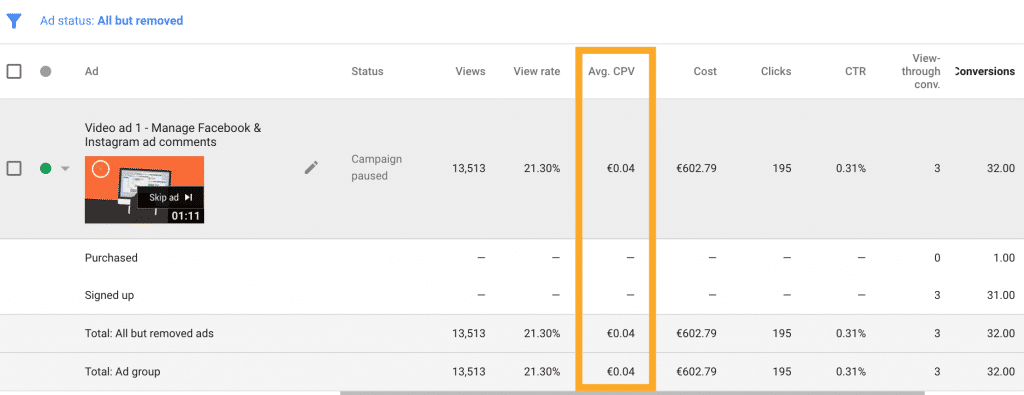
So which platform do you think is the king of the video hill? From this example it clearly looks like YouTube.
Conclusion
Hope you had lots of fun reading this post just like we did running this experiment!
This experiment tells us that YouTube video ads converts to free trials much better than Facebook videos ads.
We also saw how YouTube ads fared better than Facebook video ads at multiple levels:
- More views at lower cost per view, despite YouTube’s definition of view being more stringent than Facebook’s (YouTube counts only views longer than 30 seconds while Facebook counts all views longer than 3 seconds)
- Higher clickthrough rates
If you had to choose between Facebook and YouTube video ads and you don’t have to budget to test both platforms, I’d recommend going with YouTube.

